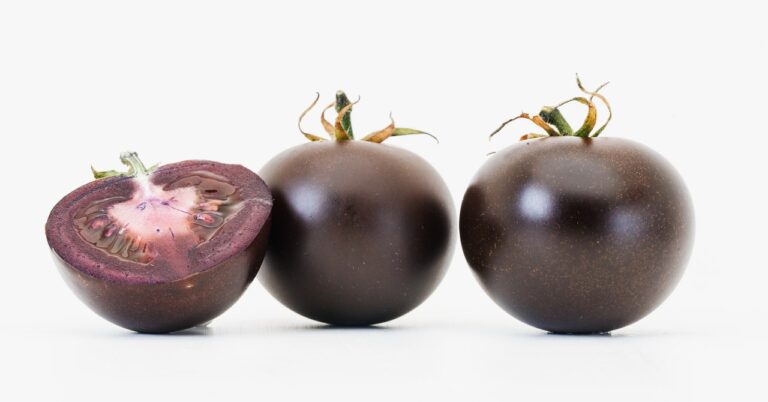
[ad_1]
In December 2004, plant scientist Cathie Martin went to the greenhouse to check on her tomatoes. The tiny fruits, about the size of gumdrops, were still green. These miniature tomatoes, a variety widely used in research labs, normally become red upon ripening. But when Martin came back after Christmas, they were starting to turn purple—just as she’d hoped.
Martin and her colleagues at the John Innes Centre in the UK were aiming to make a tomato high in anthocyanin, an antioxidant-rich pigment found in blackberries and blueberries. The team engineered the jewel tone by adding two genes from the snapdragon flower, which act like a switch to turn on the production of anthocyanins. Over the years, Martin and her team have crossed their purple tomatoes with other breeds to make them bigger—and tastier—than the micro variety they initially grew.
Now, the United States Department of Agriculture has decided that their purple tomato can be grown and cultivated in the US. On September 7, the agency issued a statement saying the tomato is “unlikely to pose an increased plant pest risk compared to other cultivated tomatoes” and is not subject to regulation. (This is the main criteria the agency uses to determine whether crops made using biotechnology should be regulated.) Norfolk Plant Sciences, a company cofounded by Martin, plans to roll out a purple cherry tomato in a handful of test markets in 2023. The biotech firm is also working on purple tomato juice, sun-dried tomatoes, and beefsteak tomatoes, and plans to sell seeds for backyard gardeners. “We hope people will eventually grow their own,” says Martin.
Martin’s purple tomato isn’t the first genetically modified fruit to be approved in the US. It’s not even the first genetically modified tomato—that designation goes to the Flavr Savr, introduced back in 1994 as the first genetically modified crop commercialized for human consumption. The Flavr Savr was created to have a longer shelf life than conventionally bred tomatoes. But because of its high production and distribution costs, it was pulled from the market just a few years later. The industry instead turned toward more profitable engineered crops, such as corn and soy, designed with the grower or producer in mind: to resist pests, tolerate herbicides, or produce higher yields.
The purple tomato may mark a turning point for genetically modified foods in the US: Its engineered trait is meant to entice the shopper, not the farmer—specifically one interested in potential health benefits. “This is a trait that is mainly for the consumer,” says Bárbara Blanco-Ulate, a fruit biologist and professor at the University of California, Davis, who was not involved in developing the purple tomato. “People want food that is more nutritious and exciting.”
While purple-skinned tomatoes have been developed through conventional breeding, they don’t accumulate high levels of anthocyanins in the flesh. There’s evidence from other researchers that these compounds may help prevent cancer, reduce inflammation, and protect against type 2 diabetes. And in a 2008 study, Martin and her team found that mice that were predisposed to developing cancer lived 30 percent longer on a diet supplemented with purple tomatoes than mice on a regular diet supplemented with normal red tomatoes. (Of course, animal studies don’t always translate to humans, and there are many lifestyle and genetic factors that may affect a person’s cancer risk.)
[ad_2]